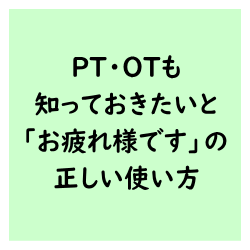目次
膝伸展筋力は握力よりも高齢者における
機能的パフォーマンスを予測する要因になり得るか?
筋力は高齢者の移動能力等の身体的なパフォーマンスを決定する要因ですが,本邦では昔から握力が全身筋力の指標として使用されてきました.
しかしながらあくまで握力は手指の屈曲筋力を評価しているにすぎませんので,移動能力をはじめとする身体的パフォーマンスとの関連が強いとは考えにくいところがあります.
そのため移動能力をはじめとする身体的パフォーマンスを反映する指標として,膝関節伸展筋力が使用されることが多くなってきております.
今回は膝伸展筋力は握力よりも高齢者における機能的パフォーマンスを予測する要因になり得るかを明らかにした報告をご紹介させていただきます.
今回ご紹介する論文
Arch GerontolGeriatr. 2015 Mar-Apr;60(2):252-8. doi: 10.1016/j.archger.2014.11.010. Epub 2014 Dec 2.
Is knee extension strength a better predictor of functional performance than handgrip strength among older adults in three different settings?
Martien S, Delecluse C, Boen F, Seghers J, Pelssers J, Van Hoecke AS, Van Roie E.
今回ご紹介する論文は2015年に掲載された比較的新しい研究です.
研究の目的
The first purpose was to examine whether knee extension strength is a better predictor of functional performance than handgrip strength among older adults (≥60 years). The second purpose was to identify functionally relevant cut-off values for muscle strength.
この研究の主目的は膝関節伸展筋力は握力よりも高齢者における機能的パフォーマンスを予測する要因になり得るか否かを明らかにすることとなっております.
第2の目的は筋力の機能的なカットオフ値を明らかにすることとなっております.
研究の方法
770 community-dwelling older adults, 104 older adults living in assisted living facilities and 73 nursing home residents were included. Static strength, expressed in kg/kg body weight (BW), was measured using two field tests: handgrip (GRIP/BW) and knee extension (KNEE/BW) test. Functional performance was assessed with 6-Minute Walk Distance (6MWD, N=947) and modified Physical Performance Test (mPPT, N=152).
研究の対象は770例の地域在住高齢者,介護型施設に入所している104例,ナーシングホームに入所している73例となっております.
握力(体重比),膝関節伸展筋力(体重比)を測定しております.
身体的パフォーマンスとして6分間歩行距離,mPPTを測定しております.
研究の結果
Both GRIP/BW and KNEE/BW were positively correlated with functional performance in all settings (p<0.05). In the community and nursing homes, both strength variables equally contributed to functional performance. In assisted living facilities, KNEE/BW (R(2)6MWD=0.39 and R2mPPT=0.35) was clearly a better predictor of functional performance than GRIP/BW (R(2)6MWD=0.15 and R2mPPT=0.12). GRIP/BW had no added value to KNEE/BW in order to explain the variance in functional performance. Functionally relevant cut-off values for static strength, for men and women respectively, were set at 0.40 and 0.31 for KNEE/BW and at 0.43 and 0.31 for GRIP/BW.
握力(体重比)・膝関節伸展筋力(体重比)ともに全ての対象例で身体的パフォーマンスと有意な関連を認めております.
地域在住高齢者およびナーシングホームに入所している高齢者においては,握力と膝伸展筋力の身体的パフォーマンスに対する寄与率は同等でありましたが,介護型施設へ入所している高齢者においては,膝伸展筋力の方が握力よりも身体的パフォーマンスとの関連が大きい結果でありました.
カットオフ値を算出した結果,膝伸展筋力のカットオフ値は男性で40%,女性で31%であり,握力のカットオフ値は男性で43%,女性で31%でありました.
研究の結論
Handgrip and knee extension strength are both important predictors of functional performance in older adults. In assisted living facilities only, knee extension strength was clearly more predictive than handgrip strength. Both cut-off values appear to be highly sensitive to screen for functionally relevant muscle weakness in older adults.
握力および膝伸展筋力いずれも高齢者の身体的パフォーマンスを予測する上で重要な要因であることが明らかとなりました.
しかしながら介護型施設に入所している高齢者においては握力よりも膝伸展筋力が身体的パフォーマンスを予測する上で有用な指標であると考えられます.
握力・膝伸展筋力いずれのカットオフ値も感度が高く高齢者の筋力低下を評価する上で有用であると考えられます.
今回は膝伸展筋力は握力よりも高齢者における機能的パフォーマンスを予測する要因になり得るか否かを明らかにした報告をご紹介させていただきました.
比較的元気な高齢者においては握力は身体的パフォーマンスを決定づける要因として使用できますが,介護が必要な虚弱高齢者においては握力よりも膝伸展筋力の使用が適切だということですね.







コメント